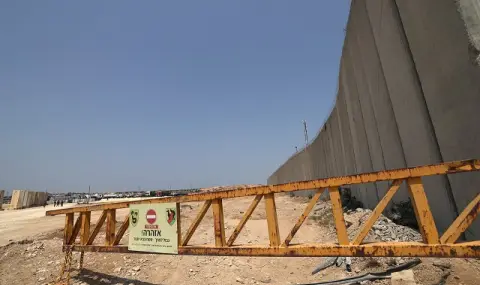They are starving in the Gaza Strip. The economy is collapsing, people don't have money, and even if they did, they can't withdraw it. According to some reports, there is now only one working ATM in Gaza. Children are in the worst situation.
"Despite reports of large food deliveries, the needy in Gaza are not getting enough food," said the head of the World Health Organization (WHO), Tedros Ghebreyesus. UNICEF is sounding the alarm that many children in Gaza are malnourished because they sometimes go hungry all day long.
Children suffer from malnutrition
The situation in the southern part of Gaza is particularly dramatic. “The current situation in Rafah is a real disaster for children,”, points out Jonathan Cricks, from UNICEF's representation in Palestine. “When it is not possible to distribute food, especially medical food, which is specially designed for the malnourished, it can prove fatal for more than 3,000 children suffering from acute malnutrition.“
Israel, for its part, claims that it allows the trucks with canned food, flour and hygiene items through the Kerem Shalom border crossing, but after crossing the border they remain undistributed. International organizations had not taken the necessary steps to distribute the aid, Israeli authorities claim. International humanitarian organizations, on the other hand, claim that the safe distribution of aid is not possible at all – especially since Israel began its offensive in the Gaza Strip in May.
Team of “Neue Zurcher Zeitung“ has studied the situation on the ground and explains that after the closure of the border crossing between Egypt and Rafah in early May, Israel has opened two new border crossings for aid to pass through. However, they are not enough, Jonathan Fowler, the spokesperson of the United Nations Agency for Palestine Refugees (UNRWA), points out to the Swiss publication. One of the transitions, for example, is not at all suitable for the passage of trucks, because it can only pass individual people.
„The risk of dying is high“
Since June 7, there have been opportunities to bring in aid through the temporary American port on the Gaza coast, but this too can hardly improve the situation because it is hardly used by UN aid organizations due to security concerns.
p>
Security is also a big problem at the Kerem Shalom border crossing in southern Israel, 320 meters from the Gaza Strip. “The problem is simply the ongoing fighting – since the beginning of the war, about 200 of our employees have been killed. "It's very difficult to get help while there's a high risk of being killed," says Fowler. In principle, the routes of the trucks are coordinated with the Israeli army, but nevertheless they are fired upon, the NCC points out.
What trucks actually reach Gaza?
I.e. the problem is in the distribution of aid, not necessarily in the number of trucks, summarizes the Swiss publication. At the same time, it points out that the data of Israel and the UN are very different.
The UN agency for Palestinian refugees says that almost no aid trucks are coming to the Gaza Strip anymore, while Israel claims that 350 trucks passed through the border crossings every day in May. However, in addition to humanitarian aid, their accounts also include the so-called commercial supplies. In May, the Israeli military allowed traders from Israel and the West Bank to sell food in Gaza again.
There is no money to buy food
Palestinians in Gaza told aid organizations that there are more goods in the markets again – which is apparently a consequence of the resumed commercial supplies. Last week, Israeli sources released photos and videos showing packed markets. The question is whether these goods actually reach the people, writes NCC.
„We have always pleaded for commercial supplies to be allowed into the Gaza Strip, but they are not a solution to the problem,” says Jonathan Fowler. “Demand far exceeds supply, and inflation in the Gaza Strip is huge. People simply cannot afford the goods from the market.“
Money in Gaza is simply not enough, summarizes the Swiss publication. The economy is collapsing, there are almost no jobs. And even if people have money in their accounts, they can hardly get to it – according to some reports, there is currently only one functioning ATM in the Gaza Strip.
